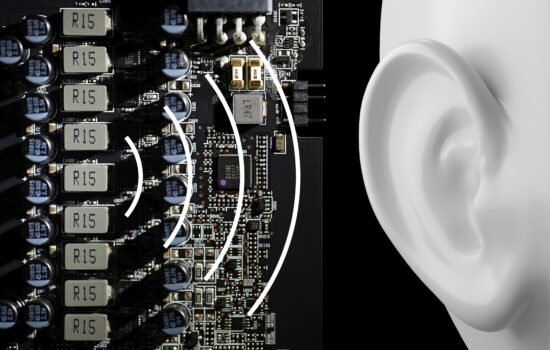Conclusion
The biggest hardware changes compared to non-Super cards concern the GeForce RTX 4070 Ti Super. What’s different is the GPU, the amount of GDDR6X memory or the width of the memory bus. We have the RTX 4070 Ti Super in one of the cheapest non-reference designs, the Ventus 3X, for analysis and it will be about “reputation repair” as well. MSI has tarnished it a bit in this line of graphics cards in the past, but now it’s a very attractive solution.
Conclusion
Compared to the RTX 4070 Ti Suprim X, the tested RTX 4070 Ti Super is on average 9% faster gaming-wise, with around +12% in terms of minimum fps. It should be noted, however, that with equivalent designs the difference may be even greater by a percentage point or two. In fact, within our database we compare the results of MSI’s top RTX 4070 Ti (Suprim X) design with the lowest in the RTX 4070 Ti Super (Ventus 3X), and there’s one more thing in connection with this graphics card. Neither Nvidia nor MSI are entirely happy with the pre-production BIOS, pointing to it achieving lower than expected performance. However, the different results here may also be due to different conditions. Systems with poorer airflow will throttle the card and it can probably easily happen that just by doing this it will underperform other models a bit. Especially since the Ventus 3X is a non-OC model with lower GPU clock speeds (2670–2775 MHz), which also needs to be factored in.
Anyway, our sample seems to be just fine. The only problematic cases should be those where other reviewers have reported to Nvidia either a very small performance increase of the RTX 4070 Ti Super Ventus 3X over the RTX 4070 Ti or even results that took a negative trend. In our case, however, no such behavior occurs. In Microsoft Flight Simulator, there’s admittedly zero gain in the low 1080p resolution even compared to the RTX 4070 Super, but that’s due to CPU bottleneck. We’re still talking about a high frame rate of 92–99 fps, but if even that’s not enough – for example, if you own a high-speed monitor – there’s always the option of enabling Frame Generation within Nvidia DLSS 3, which will get you to twice the fps. Of course, still while maintaining comparable image quality with graphical detail at “Ultra”.
Even more than in MFS, Frame Generation is useful in Cyberpunk 2077, where it makes playing with ray tracing at the target resolution of 1440p comfortable. Cyberpunk 2077 is also one of the games where, at 2160p resolution with ray-tracing graphics, the RTX 4070 Ti Super is likely to benefit significantly from more memory, being as much as 19% faster in terms of average fps and 33% faster in terms of minimum fps compared to the RTX 4070 Ti (Suprim X), which is well above the average for all games.
More important than the RTX 4070 Ti comparison, however, is how the RTX 4070 Ti Super stands up against the competing Radeon RX 7900 XT. We tested the latter in the Sapphire Pulse version, which, like the Ventus, represents the lowest class. With RT graphics, the GeForce has the upper hand. In some cases, it’s dramatically so, (Battlefield V, Control, Cyberpunk 2077), in others only symbolically (v pôvodnom Metro Exodus or v Shadow of the Tomb Raider), depends on the amount of ray-tracing work. Where there’s less to little, the RX 7900 XT doesn’t fall so far behind. And as long as the game is only being created by rasterizing, the Radeon usually already has the upper hand. That is, with some rare exceptions.
On average, the RX 7900 XT Pulse comes out 4–6% faster than the RTX 4070 Ti Super Ventus 3X, depending on resolution. So the price/performance ratio may be better, but always at the cost of significantly worse efficiency.The RTX 4070 Ti Ventus 3X has roughly 100W less power draw (yes, the Ventus 3X is well below the 285W TGP) and efficiency is clearly on the GeForce’s side. The RTX 4070 Ti Super Ventus 3X has truly top-notch efficiency in this performance class, in an optimal situation 20% higher even compared to the RTX 4080 Suprim X. In this regard, the advantage of the RTX 4070 Ti Super Ventus 3X is that the GPU clock speeds are more conservative, partly because it’s not an OC model. Running a graphics card can be quite economical this way, and you probably won’t find many designs that are more efficient than the Ventus 3X. GPU clock speeds are relatively lower, but they still exceed the reference ones in boost. To what extent this will be in your build also depends on the intensity of the system cooling in the case.
The Ventus 3X cooler is decent, at least for the needs of this graphics card. ISure, higher-end designs will keep the GPU and memory at lower temperatures, but in this case too, they’re low enough, and there’s also the reward of super-low noise that comes with it. Based on the results, it is even possible to conclude that optimisation with regard to quiet operation is present. The MSI RTX 4070 Ti Super Ventus 3X is one of the quietest cards we’ve tested to date, and the acoustic profile is supremely pleasant, with no noticeable tonal peaks. The coils, by the way, make themselves heard more at very high frequencies around 15.8 kHz.
For completeness, it is also worth mentioning the computational performance evaluation, for example, in 3D rendering, in which the increase over the RTX 4070 Ti can be up to 20%, but usually it’s around 15%, sometimes less, it’s individual. And it naturally still holds true that as overwhelming as GeForce’s performance superiority is sometimes, the opposite also occurs, where typically under OpenGL, it’s already the Radeon (RX 7900 XT) that dominates. Results of non-gaming tests (including light acceleration in Adobe Photoshop or Affinity Photo) can be found traditionally between chapters 35 to chapter 40 of this article.
Overall, the RTX 4070 Ti Super Ventus 3X is a very attractive graphics card and as long as it doesn’t come with a price above 900 EUR and will be available in stores for this money, we can put a “Smart buy!” sticker on it with a clear conscience.
English translation and edit by Jozef Dudáš
| MSI RTX 4070 Ti Super 16G Ventus 3X |
| + Very high performance (also suitable for 2160p/4K gaming) |
| + Top-notch efficiency... |
| + ... is unusually high considering the gaming/computing performance |
| + Attractive price/performance ratio for a higher-end card |
| + Solid cooler. At average temperatures... |
| + ... below-average noise level during operation |
| + Exclusive support for DLSS (3), CUDA and OptiX |
| + Considering the cheaper design, high GPU clock speeds |
| + AV1 encoding support |
| - DisplayPort version 1.4a only (applies to all RTX 4070/graphics cards with Nvidia Ada Lovelace GPUs) |
| - Confusion surrounding the BIOS. It was not tweaked reliably even on the day of the graphics card release |
| Suggested retail price: 889 EUR |
For cooperation in providing the tested hardware, we would like to give special thanks to the Datacomp e-shop
- Contents
- MSI RTX 4070 Ti Super Ventus 3X in detail
- Table of parameters
- Methodology: performance tests
- Methodology: how we measure power draw
- Methodology: noise and sound measurement
- Methodology: temperature tests
- Testovacia zostava
- 3DMark
- Age of Empires II: DE
- Assassin’s Creed: Valhalla
- Battlefield V
- Battlefield V with DXR
- Borderlands 3
- Control
- Control with DXR and DLSS
- Counter-Strike: GO
- Cyberpunk 2077
- Cyberpunk 2077 with DLSS
- Cyberpunk 2077 with DXR (and DXR with DLSS)
- DOOM Eternal
- F1 2020
- FIFA 21
- Forza Horizon 4
- Mafia: DE
- Metro Exodus
- Metro Exodus with DXR and DLSS
- Microsoft Flight Simulator
- Red Dead Redemption 2 (Vulkan)
- Red Dead Redemption 2 (Dx12)
- Shadow of the Tomb Raider
- Shadow of the Tomb Raider with DXR
- Total War Saga: Troy
- Wasteland 3
- Overall gaming performance and performance per euro
- CompuBench (OpenCL)
- SPECviewperf 2020 and SPECworkstation 3
- FLOPS, IOPS and memory speed tests
- 3D rendering 1/2 (LuxMark a Blender@Cycles)
- 3D rendering 2/2 (Blender@Radeon ProRender a Eevee)
- Photo editing (Adobe Photoshop, Lightroom and Affinity Photo)
- Broadcasting (OBS and Xsplit)
- Password cracking
- GPU clock speeds
- GPU and VRAM temperatures
- Net graphics card power draw and performance per watt
- Analysis of 12 V rail power supply (higher load)
- Analysis of 12 V rail power supply (lower load)
- Analysis of 3,3 V rail power supply
- Noise level
- Frequency response of sound
- Conclusion














Even number of blades are usually avoided in PC fans due to it negatively affecting noise, but MSI has decided to use 10 blades here… but in pairs of 5. Perhaps that’s why they opted to connect blades in pairs instead of making a full ring, so that there’s an odd number of repeating units. Really interesting design.